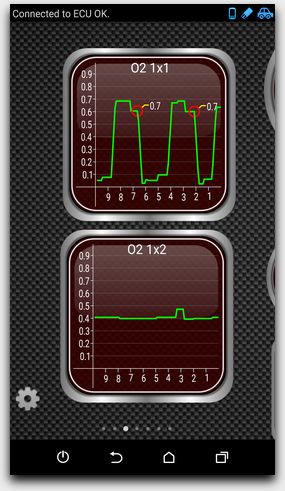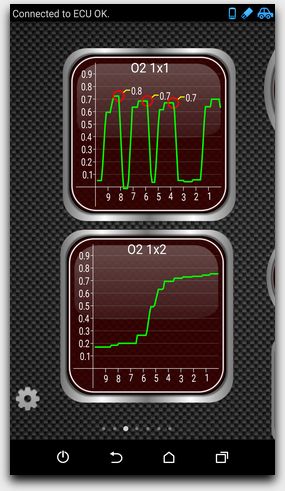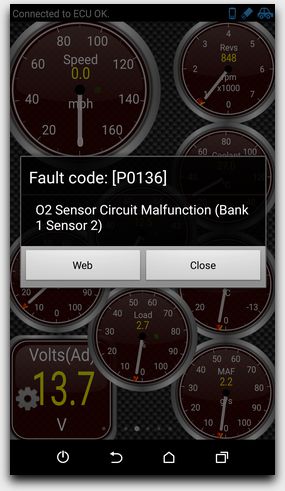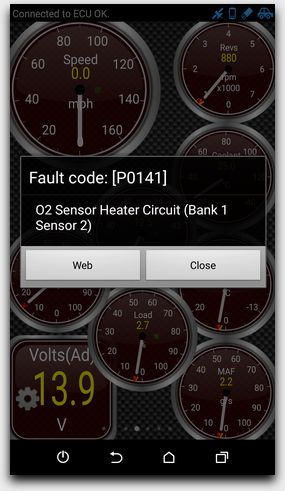In a combustion engine car, your engine warning light can sometimes appear a short time after a less-than-smooth journey up some hills. This could be because a secondary, post-catalytic converter O2 sensor is not reporting correctly. O2 sensors are also sometimes called Oxygen or Lambda sensors, and they are responsible for ensuring the correct mix of fuel and oxygen from the air.
O2 Sensor Graphs
If you happen to have the equipment to output a live graph of your O2 sensors, this is what bad and replacement sensors can look like compared side-by-side, after a short run. The lower graphs (O2 1×2) are the ones to pay attention to:


Old and Replacement O2 Sensor Graphs
O2 Sensor Trouble Codes
O2 sensors take a while to warm up, and if defective, the output may be minimal, or not change at all. If that happens for too long, the engine warning light appears. By using some diagnostic kit, you can reveal your Engine Control Unit (ECU) Diagnostic Trouble Codes (DTCs):


DTCs P0136 and P0141
This exact issue happened to me after a trip up a steep hill, shortly after leaving home. My diagnostic kit revealed the error code was P0136.
Both of these involve ‘Bank 1 Sensor 2′. This is the post-catalytic converter, situated on the exhaust pipe. Sensor 1 is the pre-catalytic converter. Other banks represent secondary/other exhaust systems.
If the O2 sensor’s circuit has one of a few potential issues, P0141 can also appear. For example, the O2 sensors on my vehicle connect via three terminals. One is for power to the sensor, one is ground, and one is for the heating element. If the heating element blows, which heating elements do over time, then it is likely you may receive P0141.
Oxygen Calibration
Without a post-cat O2 sensor being used alongside a pre-cat O2 sensor, the engine cannot properly calibrate the fuel level to regulate emissions, and over time, the problem gets worse as the car runs in ‘limp mode’ and guesses the mix. Fuel runs too rich or lean, meaning you can spend more money, and the car may jolt or run roughly when engine torque is lowered after a long high-torque run (such as travelling uphill and then allowing the engine to relax after reaching the top).
An O2 sensor with a defective heating element still works to an extent, but barely shows any recognisable change. The exhaust system seems to warm it up slightly to produce slight ‘blips’ in its output.
Replacing the Sensors
Sometimes these sensors can simply be replaced with a special removal tool. The pre-cat sensors are usually easy to change, and are visible when opening the bonnet. Unfortunately, in my case, removing the post-cat O2 sensor meant the exhaust had to be lowered to get a tool on it, since it was hidden in an upright position. Post-cat O2 sensors can also be very difficult to remove — the exhaust reaches very high temperatures, which can seize the sensor’s threads over time. Anti-seize grease should be applied on the threads to prevent this!
